Toyota Prius Prime 2 (XW50)
Compact HatchbackProduct Gallery
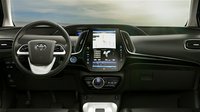

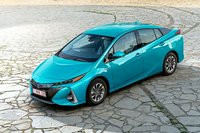
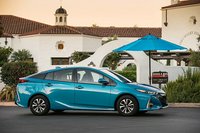
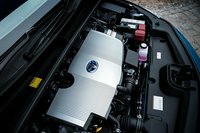
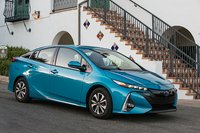

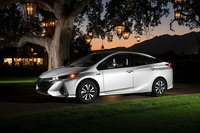

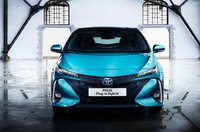
Product Overview
Toyota Prius Prime Mk2 (chassis code XW50) is a mid-size hatchback in production from 2017. It is powered by a single plugin-hybrid drivetrain with an inline-4 Atkinson engine that displaced 1.8 liters.
The plug-in hybrid drivetrain can help the owner save on fuel and car tax, though those who plan on keeping the car after warranty should be mindful of the complexity.
In other aspects, the car is just a standard Mk4 Prius with some extra weight.
Another plus is the small 10.2m (33.5ft) turning circle.
Ratings
What we found
Neofiliac score 31%
Pros
- Small turning circle
Cons
- Poor performance
- Miserably low engine output
- No independent rear suspension
- PHEV nonsense
What external reviewers found
External score 57%
Pros
- Excellent electric range
- Excellent all-wheel drive
- Good fuel economy
- Comfortable ride
- Fun, torque-y acceleration
- Competitively priced
Cons
- Lack of Android Auto
- No DC fast charging
- Alternatives offer better range
- Alternatives offer more efficiency
Your rating:
12345678910
?/10
Price Comparison
As associates of the merchants above, we earn a commission when you make a purchase using the supplied links.
Specifications
[{"Ft":"Capacity","Fn":"Cargo Capacity","Fv":"354 L / 12.5 cu-ft"},{"Ft":"Capacity","Fn":"Fuel Capacity","Fv":"43.0 L / 11.4 gal"},{"Ft":"Capacity","Fn":"Passengers","Fv":"4"},{"Ft":"Capacity","Fn":"Payload","Fv":"230 kg / 507 lbs"},{"Ft":"Chassis","Fn":"Brakes | Front","Fv":"Ventilated discs"},{"Ft":"Chassis","Fn":"Brakes | Rear","Fv":"Disc"},{"Ft":"Chassis","Fn":"Power Steering","Fv":"Electric Steering"},{"Ft":"Chassis","Fn":"Suspension | Front","Fv":"MacPherson strut"},{"Ft":"Chassis","Fn":"Suspension | Rear","Fv":"Semi-independent, Torsion"},{"Ft":"Chassis","Fn":"Tire Size","Fv":"195/65 R15"},{"Ft":"Chassis","Fn":"Turning Circle","Fv":"10.2 m / 33.5 ft"},{"Ft":"Construction","Fn":"Battery | Capacity","Fv":"7.2 kWh (gross)"},{"Ft":"Construction","Fn":"Body Style","Fv":"5-door plug-in hybrid Hatchback"},{"Ft":"Dimensions","Fn":"Ground Clearance","Fv":"123 mm / 4.8 in"},{"Ft":"Dimensions","Fn":"Size | Height","Fv":"1470 mm / 57.9 in"},{"Ft":"Dimensions","Fn":"Size | Length","Fv":"4645 mm / 182.9 in"},{"Ft":"Dimensions","Fn":"Size | Width","Fv":"1760 mm / 69.3 in"},{"Ft":"Dimensions","Fn":"Track Width | Front","Fv":"1530.0 mm / 60.2 in"},{"Ft":"Dimensions","Fn":"Track Width | Rear","Fv":"1545.0 mm / 60.8 in"},{"Ft":"Dimensions","Fn":"Weight","Fv":"1605.0 kg / 3538.4 lbs"},{"Ft":"Dimensions","Fn":"Wheel Size","Fv":"6.0J x 15"},{"Ft":"Dimensions","Fn":"Wheelbase","Fv":"2700 mm / 106.3 in"},{"Ft":"Performance","Fn":"Acceleration | 0 - 100 km/h","Fv":"11.1 sec"},{"Ft":"Performance","Fn":"Acceleration | 0 - 60 mph","Fv":"10.5 sec"},{"Ft":"Performance","Fn":"CO2 Emission","Fv":"22 g/km"},{"Ft":"Performance","Fn":"Top Speed","Fv":"162.0 km/h / 100.7 mph"},{"Ft":"Powertrain","Fn":"Drivetrain Layout","Fv":"Front-engine (transverse), Front-wheel drive"},{"Ft":"Powertrain","Fn":"Emission Standard","Fv":"Euro 6"},{"Ft":"Powertrain","Fn":"Engine | Compression Ratio","Fv":"13.0:1"},{"Ft":"Powertrain","Fn":"Engine | Displacement","Fv":"1.8 L / 109.7 cu-in / 1798.0 cc"},{"Ft":"Powertrain","Fn":"Engine | Power","Fv":"98.0 hp / 73.1 kW + 31.0 hp / 23.1 kW (electric motor)"},{"Ft":"Powertrain","Fn":"Engine | Specific Output","Fv":"54.5 hp/L / 0.9 hp/cu-in"},{"Ft":"Powertrain","Fn":"Engine | Torque","Fv":"142 Nm / 104.7 lb-ft @ 3600 rpm + 40 Nm / 29.5 lb-ft"},{"Ft":"Powertrain","Fn":"Engine | Type","Fv":"multi-port injected petrol inline-4 DOHC engine with 4 values per cylinder"},{"Ft":"Powertrain","Fn":"Transmission | Type","Fv":"e-CVT"},{"Ft":"Production","Fn":"Availability","Fv":"2017"}]
External Reviews
digitaltrends[1]
Reviewer score 62% (normalized by Neofiliac)The Prius Prime's 8.8-kilowatt-hour battery pack allows for an EPA-rated 25 miles of electric only driving, at speeds up to 84 mph. That's no match for the Honda Clarity Plug-In Hybrid's 48-mile range, but the Toyota offers greater efficiency. The car's 121 hp may not seem like much, but it's more than enough in real-world conditions. A full recharge from a 240-volt Level 2 AC source takes two hours and 10 minutes.
Pros
- Excellent electric range
- Excellent all-wheel drive
- Comfortable ride
Cons
- Alternatives offer more efficiency
- No DC fast charging
pcmag[2]
Reviewer score 53% (normalized by Neofiliac)The Prius Prime sticks with its rear hatch heritage. The interior is roomy but utilitarian, with the instrument cluster in the center of the dash. The 11.6-inch vertically mounted touch-screen infotainment interface is impressive in form, but not in function. Toyota was slow to adopt Apple CarPlay, which is standard on the Prime.
Pros
- Fun, torque-y acceleration
- Good fuel economy
- Competitively priced
Cons
- Lack of Android Auto
- Alternatives offer better range
Also Check
References
<
>
x